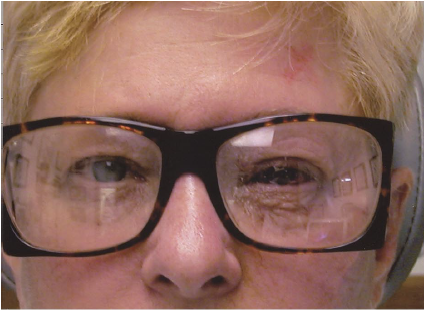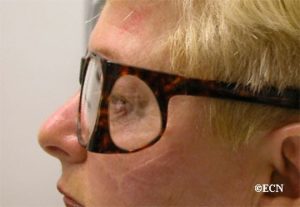Our primary goal is to find more effective ways to diagnose and treat eye cancer, but we also try to come up with innovations that make treatment more comfortable and less stressful for our patients.
Consider patients undergoing ophthalmic plaque radiation therapy. This course of treatment involves surgically implanting a radiation source onto the eye to cover the base of  an intraocular tumor. The radiation sources used for brachytherapy come in the form of small “rice-sized” radioactive seeds. These seeds are attached within a gold or steel bowl called a plaque that is implanted on the eye. This process delivers a highly concentrated radiation dose to the tumor while exposing surrounding healthy tissue to relatively less radiation.
an intraocular tumor. The radiation sources used for brachytherapy come in the form of small “rice-sized” radioactive seeds. These seeds are attached within a gold or steel bowl called a plaque that is implanted on the eye. This process delivers a highly concentrated radiation dose to the tumor while exposing surrounding healthy tissue to relatively less radiation.
Patients undergoing plaque radiation therapy sometimes have to wear a lead patch over the eye to stop exiting radiation from entering into the environment. These opaque patches obscure vision in the affected eye for the duration of the treatment. This can last four to seven days.
This is particularly problematic for monocular patients with a tumor in their seeing eye. In this case, the lead patch will leave the patient blind during the course of their treatment. The patch can also create an uncomfortable inconvenience for patients who have vision in their untreated eye. They won’t be blind, but they will have to deal with diminished depth perception.
Dr. Paul Finger has come up with a simple yet innovative solution to this problem. He developed leaded glasses that effectively block exiting radiation while allowing patients with only one functioning eye to maintain their full vision throughout the treatment.
In a study funded by The Eye Cancer Foundation and published in the American Journal of Ophthalmology. Dr. Finger and Andrzej Szechter PhD found the  leaded glasses improved patients’ quality of life without sacrificing radiation safety.
leaded glasses improved patients’ quality of life without sacrificing radiation safety.
“Radiation-blocking glasses were remarkably helpful for our patients with only one functional eye. In these cases, use of the patch made them temporarily blind, disoriented, and dependent on others. Use of leaded safety glasses allowed these patients to see and function during ophthalmic plaque radiation therapy.”
This is a concrete example of what we call patient-centered care. The goal is not only to successfully treat the cancer, but to help the patient remain as comfortable as possible throughout the process.









